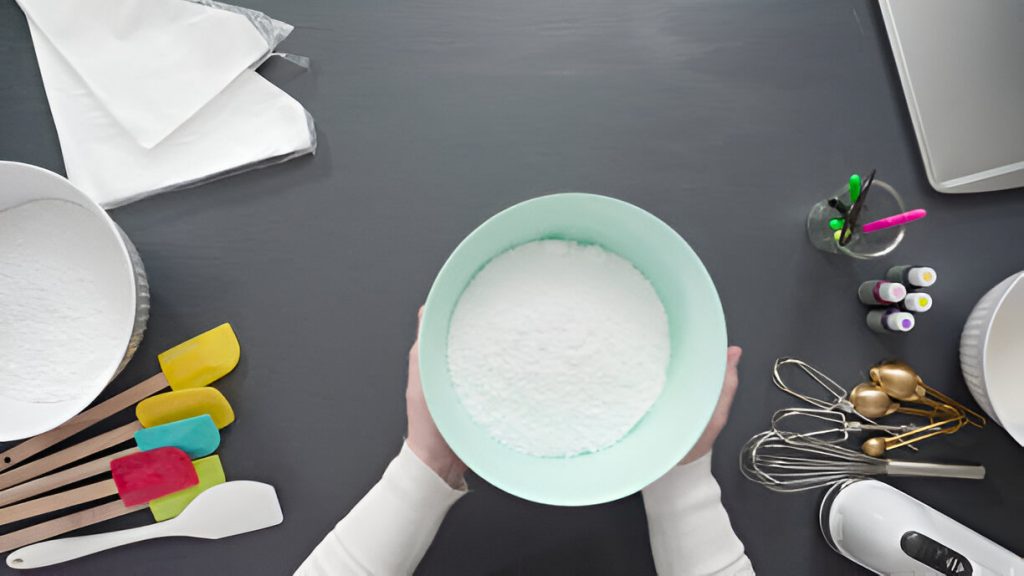Unlock the world of coffee with a sip of knowledge – did you know there are countless types to explore? From robust Robusta to velvety Cappuccino, each brew offers a unique taste experience. In this article, you’ll dive into the rich variety of Arabica, boldness of Espresso, and refreshing simplicity of Americano. Get ready to embark on a caffeinated journey through the diverse flavors and aromas that make up the wonderful world of coffee.
Arabica
Arabica coffee is known for its smooth and mild flavor profile. The Arabica bean flavors can range from fruity and floral to nutty and chocolaty, making it a favorite among coffee connoisseurs. In the Arabica vs. Robusta debate, Arabica usually takes the spotlight due to its superior taste but higher price. Arabica thrives in high altitudes in regions like Ethiopia, Colombia, and Brazil, known for their ideal growing conditions. The processing methods of Arabica beans vary from washed to natural, impacting the final taste of the brew. Additionally, Arabica generally contains less caffeine compared to Robusta beans, appealing to those looking for a milder caffeine kick in their daily cup of joe.
Robusta
You might prefer Robusta if you enjoy a strong and bold flavor in your cup of joe. Robusta beans have a distinctive taste profile characterized by earthy, woody notes and a nutty undertone. When it comes to caffeine content, Robusta packs a punch with almost double the amount found in Arabica beans, giving you that extra kick to start your day. Cultivated mainly in low-altitude regions with warmer climates, Robusta thrives in environments where Arabica plants struggle to survive. The processing of Robusta involves different roasting methods to bring out its robust flavors fully. Some popular blends include mixing Robusta with Arabica for a balanced yet intense brew or blending it with other varieties for unique and complex flavor combinations.
Espresso
For a quick and intense caffeine boost, espresso is the perfect choice to jumpstart your day. Espresso machines come in various types, from manual lever machines to modern automatic ones, each influencing the brewing techniques and flavor profiles. The crema on top of your espresso shot is crucial as it indicates quality and freshness. Understanding the history of espresso reveals its Italian origins in the early 20th century, evolving into a global favorite today. When making espresso at home or enjoying it at a café, pay attention to the balance between bitterness and sweetness in its taste profile. Experiment with different beans and grind sizes to discover your preferred espresso experience.
Americano
When making an Americano, it’s crucial to understand that its flavor profile is diluted compared to espresso due to the addition of hot water. This popular coffee drink originated during World War II when American soldiers in Italy diluted their espressos to mimic the milder coffee they were accustomed to back home.
- Brewing techniques for americano: Start with a shot or two of espresso and then add hot water.
- Flavor profiles of americano: A balanced taste that includes both the richness of espresso and the subtleties brought out by the added water.
- Origin of americano: Traced back to Italian cafes catering to American soldiers during World War II.
- Best beans for americano: Medium roast beans with good acidity levels are ideal for creating a flavorful Americano.
Serving variations of americano include adding cream or sweeteners based on personal preference.
Cappuccino
To properly enjoy a cappuccino, it’s essential to master the art of steaming milk to create that perfect velvety microfoam. Cappuccinos offer a canvas for foam art and come in various variations like flavored cappuccinos or iced versions. When comparing cappuccino to a latte, note that the former has a stronger espresso presence and less milk due to its equal parts espresso, steamed milk, and foam ratio. The robust espresso strength in a cappuccino contributes to its bold flavor profile. Originating from Italy, this drink reflects Italian influence in its name and preparation methods. Brewing a cappuccino can be done manually using an espresso machine or automatically with pod systems for convenience.
Latte
Now, let’s dive into the world of lattes. Picture yourself in a cozy cafe, surrounded by the aroma of freshly brewed coffee. As you sip on your latte, you’re greeted with:
- Frothy latte art, delicate swirls dancing on the surface.
- Steaming latte cups, warmth emanating from the porcelain as you cradle it in your hands.
- Flavorful latte variations, from classic vanilla to exotic lavender-infused blends.
- Creamy latte textures, velvety smoothness caressing your taste buds.
Explore a myriad of options with popular latte blends like caramel macchiato or hazelnut mocha. Let each sip transport you to a place of comfort and indulgence, making each moment special.
Macchiato
Exploring the world of macchiatos, you’ll discover a delightful balance of espresso and steamed milk in every sip. This coffee drink of Italian origin offers a unique experience with its small serving size that packs a punch. The rich flavor of an espresso shot is complemented by just a touch of steamed milk, creating an intense yet smooth taste profile. Topped with frothy foam, the macchiato presents a visually appealing aesthetic that enhances its overall indulgence. Below is a table summarizing the key characteristics of this beloved beverage:
| Keyword | Description |
|---|---|
| Steamed milk | Adds creaminess to the coffee |
| Espresso shot | Strong and bold flavor |
| Frothy foam | Enhances presentation |
Enjoy your next macchiato experience!
Mocha
Indulge in a rich and decadent mocha, where the perfect blend of chocolate and espresso creates a delightful flavor harmony. Whether you prefer it hot or cold, there are endless variations to explore when it comes to this beloved coffee treat.
- Chocolatey goodness: Dive into a world of mocha variations with creamy milk chocolates, dark cocoa powders, or even white chocolate drizzles.
- Mocha madness: Compare different recipes like classic mochas, mint mochas, or even spicy chili-infused versions for a unique twist.
- The art of mocha making: Learn tips and tricks for crafting the perfect cup – from frothing milk just right to selecting premium espresso beans.
- Mocha mania: Discover popular flavors worldwide such as Italian hazelnut mochas, French lavender-infused blends, or Turkish cardamom-spiced delights.
From bean to cup, follow the journey of a single mocha coffee bean as it transforms into your favorite indulgence.
Flat White
To savor the rich and velvety taste of a flat white, you’ll enjoy a perfect balance of espresso and steamed milk in each creamy sip. The key to crafting this indulgent beverage lies in the precise art of milk frothing and espresso extraction. Baristas skillfully steam milk to create microfoam, essential for achieving that smooth texture. When it comes to presentation, latte art adds an elegant touch, showcasing the barista’s pouring technique as they carefully pour the milky foam over the espresso. This process requires attention to detail and practice to master. Whether you’re at a cozy cafe or making one at home, the careful balance between steaming milk and extracting espresso is what makes a flat white a beloved coffee choice worldwide.
Cortado
Coming from the creamy delight of a Flat White, let’s dive into the world of Cortado. This espresso-based drink is unique in its own right. Here’s what you need to know:
- Cortado brewing techniques
- Precisely equal parts of espresso and steamed milk create a perfect harmony.
- Cortado flavor profiles
- A balanced blend where the rich espresso cuts through the velvety texture of milk, offering a strong but smooth taste.
- Cortado serving sizes
- Typically served in a smaller glass, around 4 to 5 ounces, allowing for concentrated flavors.
- Cortado origins and history
- Hailing from Spain, this beverage has roots in Latin America as well.
The Cortado finds popularity in various regions worldwide due to its harmonious balance of coffee and milk.
Affogato
Let’s explore how an Affogato combines the richness of espresso with the creaminess of gelato for a delightful treat. This coffee dessert, of Italian origin, offers a perfect pairing of sweet and bitter contrast. It is a popular summer treat enjoyed by many for its unique blend of flavors and textures.
| Coffee Dessert | Origin |
|---|---|
| Affogato | Italy |
| Flavor Profile | Popular Season |
|---|---|
| Sweet and Bitter | Summer |
The Affogato is known for its simplicity yet delicious taste, making it a go-to choice when craving something sweet with a caffeine kick. The combination of smooth ice cream melting into hot espresso creates a harmonious balance that is truly satisfying.
Doppio
The Doppio espresso shot is a double shot that provides a strong and intense flavor perfect for those needing an extra boost of caffeine. When comparing the doppio shot to a regular espresso, you’ll notice its higher caffeine content and more robust taste. If you prefer a touch of milk with your doppio, try a doppio macchiato; almond or oat milk are excellent milk alternatives to enhance this drink. For a balanced brew, the doppio cortado combines equal parts steamed milk and doppio espresso using precise brewing methods, resulting in a velvety texture. Lastly, if you crave intensity, the doppio ristretto made from dark roasts is among the most sought-after and popular blends available.
Ristretto
When brewed with a smaller amount of water, the ristretto results in an intense and concentrated flavor profile that differs from a regular espresso shot. Ristretto brewing methods involve using the same amount of coffee grounds as an espresso but half the water, creating a bolder taste. Compared to espresso, ristretto is known for its richer and sweeter flavor due to the reduced bitterness from the shorter extraction time. In terms of serving sizes, ristrettos are typically served in smaller quantities ranging from 0.5 to 1 ounce, offering a quick yet flavorful caffeine kick. Despite its intense taste, ristretto actually contains slightly less caffeine compared to a standard espresso shot because of the reduced water volume used during brewing.
Lungo
If you prefer a longer and milder coffee experience, opt for a lungo shot that uses more water to extract a larger volume of espresso from the same amount of grounds. When delving into Lungo brewing techniques, keep in mind that this method brews a longer shot compared to espresso. Here are some factors to consider when exploring Lungo:
- Lungo vs espresso flavors: Lungo tends to have a milder taste and less intensity than espresso.
- Lungo coffee pods comparison: Some coffee pod brands offer specific Lungo pods designed for this brewing style.
- Lungo serving sizes: A typical Lungo shot is about 3 ounces, providing a more extended drinking experience.
- Lungo coffee machines: Certain coffee machines come with preset options for brewing Lungos efficiently. Enjoy your flavorful journey with a satisfying lungo!
Turkish Coffee
For a rich and aromatic experience, consider trying Turkish coffee, known for its strong flavor and unique brewing method. The traditional brewing technique involves using a special pot called a cezve to prepare the coffee over low heat. Turkish coffee holds cultural significance as it is often enjoyed in social settings, fostering connections among people. The preparation process includes finely grinding the beans and adding water and sugar directly to the cezve. This method requires unique tools like a small cup called a fincan for serving. The flavor profile of Turkish coffee is distinct, with an intense taste that can be slightly bitter or sweet depending on personal preference. Serving style is essential in Turkish culture, making every cup a ceremonial experience.
French Press
You can enhance your coffee experience by using a French press, which allows you to brew a rich and full-bodied cup with ease. When using a French press, consider the following brewing techniques:
- Grind size: Coarse grounds work best for French press brewing, giving your coffee a robust flavor.
- Water temperature: Heat water to about 200°F (93°C) for optimal extraction of flavors.
- Steep time: Let the coffee steep for around 4 minutes to achieve that perfect balance of strength and aroma.
- Coffee to water ratio: A common ratio is 1:15 (coffee to water), but feel free to adjust based on your preference for stronger or milder brews. Enjoy the art of French press brewing!
AeroPress
Moving on from the French Press, let’s delve into the world of AeroPress, a versatile and compact coffee brewing device. The AeroPress offers a unique way to brew coffee with its rapid brewing time and impressive flavor extraction capabilities.
Here’s a handy table showcasing some key aspects of AeroPress:
| Brewing Techniques | Flavor Profiles | Benefits |
|---|---|---|
| Inverted Method | Smooth | Portable |
| Standard Method | Rich | Easy Cleanup |
| Immersion Brewing | Clean | Consistent Results |
When comparing AeroPress to espresso, you’ll find that while both produce concentrated coffee, the AeroPress is known for its smoother taste. Additionally, there are various AeroPress recipes available online to experiment with different flavors and strengths. The benefits of using an AeroPress include portability, quick brewing time, and easy cleanup – making it a favorite among coffee enthusiasts on-the-go.
Cold Brew
Exploring the realm of cold brew, don’t overlook its smooth and mellow flavor that’s achieved through steeping coarsely ground coffee beans in cold water for an extended period. When delving into the world of cold brew, there are various aspects to consider:
- Cold Brew Variations: From classic black cold brew to innovative flavors like vanilla or lavender-infused.
- Cold Brew vs. Iced Coffee: Cold brew is brewed with time, while iced coffee is typically hot brewed coffee poured over ice.
- Cold Brew Recipes: Experiment with different brewing ratios and add-ins like cinnamon or almond milk for a personalized touch.
- Cold Brew Trends: Nitro cold brew on tap at cafes or ready-to-drink bottled options gaining popularity.
Discover not only the refreshing taste but also the potential health benefits of this trendy beverage.
Nitro Coffee
When it comes to Nitro Coffee, the creamy texture and cascading effect are created by infusing cold brew with nitrogen gas. Nitro coffee offers several benefits like a smoother taste, increased sweetness, and a velvety mouthfeel. The brewing process involves kegging cold brew, infusing it with nitrogen through a pressurized valve, and serving it on draft. Compared to traditional cold brew, nitro coffee has a richer flavor profile with hints of chocolate and caramel notes. To make this trendy beverage at home or in a café, you will need specific equipment such as a kegerator or stout faucet for dispensing the nitrogen-infused coffee.
| Nitro Coffee Benefits | Nitro Coffee Brewing Process |
|---|---|
| – Smoother taste | – Kegging cold brew |
| – Increased sweetness | – Infusing with nitrogen |
| – Velvety mouthfeel | – Serving on draft |
| Nitro Coffee Flavor Profiles | Nitro Coffee Equipment Needed |
|- Chocolate and caramel notes |- Kegerator |
|- Richer flavor profile |- Stout faucet |
Irish Coffee
To experience the classic flavors of Irish Coffee, you should combine hot brewed coffee with Irish whiskey, sugar, and a layer of cream floated on top for a rich and indulgent treat. The history of Irish coffee dates back to the 1940s in Ireland when it was created to warm up American tourists. Today, there are various variations of this iconic drink that cater to different tastes and preferences. If you want to try making an authentic Irish Coffee at home, follow these steps:
- Brew a strong cup of your favorite coffee.
- Add a shot of Irish whiskey and stir in some sugar until dissolved.
- Gently pour heavy cream over the back of a spoon to float it on top.
- Enjoy the layers as you sip this delightful blend.
Irish coffee remains popular worldwide for its unique blend of warmth, sweetness, and richness.
Vietnamese Coffee
If you enjoyed the creamy delight of Irish Coffee, you’ll love exploring Vietnamese Coffee. This type of coffee is known for its unique blend of robusta beans and sweetened condensed milk. In Vietnam, traditional brewing methods like French drip and the use of a Phin filter are common in making this aromatic beverage.
Let’s take a closer look at some key elements that make Vietnamese Coffee stand out:
| Components | Description |
|---|---|
| Brewing Methods | Traditional methods like French drip are used |
| Sweetened Condensed Milk | Adds a rich and sweet flavor |
| Robusta Beans | Known for their strong, bold taste |
| Phin Filter | A special filter used to brew the coffee slowly |
Indulge in the flavors and experience the essence of Vietnamese culture through its distinctive coffee traditions!
Bulletproof Coffee
Bulletproof Coffee is a popular choice among those seeking a creamy and energizing start to their day. When you sip on this rich beverage, you experience a blend of coffee, butter, and MCT oil that can kickstart your morning with focus and clarity. Here are some aspects to consider:
- Benefits of bulletproof coffee: Enhanced mental clarity
- Bulletproof coffee recipe variations: Adding flavors like cinnamon or vanilla
- Bulletproof coffee alternatives: Using ghee instead of butter for a dairy-free option
- Bulletproof coffee and weight loss: Supporting ketogenic diets for fat burning You might find Bulletproof Coffee beneficial if you are exploring intermittent fasting as it provides sustained energy without breaking your fast.
Greek Frappé
If you’re looking to dive into another unique coffee experience, why not try a Greek Frappé? Originating in Greece, this frothy delight holds cultural significance as a popular summer drink enjoyed by locals and tourists alike. The flavor profile of a Greek Frappé is often described as strong and sweet, with a delightful frothiness that sets it apart. To brew this refreshing beverage, mix instant coffee with cold water and sugar in a shaker until creamy; then pour over ice. Serving variations can include milk or condensed milk added for extra creaminess. This iced delight carries a history dating back to the 1950s when it was accidentally created at the Thessaloniki International Fair by Dimitris Vakondios.
Chemex
You should consider trying the Chemex if you enjoy a clean and flavorful cup of pour-over coffee with a visually pleasing brewing process. The Chemex offers a unique experience with its elegant design and ability to highlight the intricate flavors of your coffee beans. Here are some tips to enhance your Chemex brewing:
- Chemex Brewing Techniques: Use a gooseneck kettle for precise pouring.
- Chemex Filter Varieties: Choose between natural or bleached filters depending on your preference.
- Chemex vs Other Pour Over Methods: Chemex typically yields a smoother brew compared to other pour-over methods.
- Chemex Grind Size Recommendations: Aim for a medium-coarse grind to achieve optimal extraction.
Siphon Coffee
Siphon brewing creates a captivating visual spectacle as the water rises and falls within the vacuum pot. Siphon coffee brewing techniques involve heating water in the lower chamber, then creating a vacuum to draw it through coffee grounds in the upper chamber for a unique extraction process. This method often results in a clean, smooth brew with bright acidity and complex flavors. To try siphon coffee at home, you’ll need specialized equipment like a siphon pot, burner, filters, and freshly ground beans. Originating in the 19th century, siphon coffee has been gaining popularity recently due to its theatrical presentation and exceptional taste profiles that highlight nuances in different coffee beans. Explore this historical brewing method for an exquisite coffee experience.




